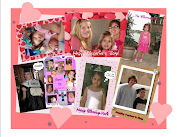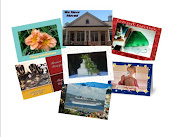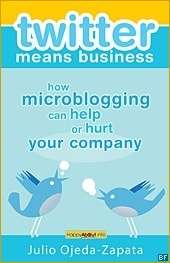What is your greatest fear?
One of the greatest fears in life is
public speaking – right up there with heights, snakes, spiders and being buried
alive.
Recently I was asked to do a presentation on
‘How to Give an Outstanding Presentation.’
I believe there are 3 Key Elements
for giving an outstanding presentation
•
Knowing
Your End Goal
•
Prepare
and Practice
•
Being Enthusiasm
and passionate
Starting with the end
goal in mind helps to determine what you want the outcome of your presentation
to be. Ask yourself – What are you
trying to accomplish? i.e. schedule appointment, sell a product or service, get
donations, etc.? What will be the ‘Call
to Action’ at the end of the presentation?
Knowing the answers to these questions will help to build the outline
for your presentation.
Preparation - 'Success occurs when preparation meets opportunity.' Zig Ziglar
- Logistics - Most great speakers are taught to visualize their surroundings and a successful outcome. Always try and find out as much information about what you parameters will be for your presentation, i.e. How much time will you have? Will you be able to use Power Point? Will you have a white board (if you like to draw)? Will an easel be available (if you need to capture information)?
- Decide on Your Approach - Who will be your audience - prospects, customers/clients, business colleagues? Male/Female? Age? Industry?
- Prepare for Everything - 'Whatever can go wrong, will go wrong.' Hopefully not but be prepared just in case. I've had situations where my power point would not work, lost my notes, etc. So Prepare and Practice, Practice and Prepare - so you can do it from memory.
All of the above will
help you to prepare the outline and foundation for your presentation.
Power Point is a
great tool to use (when available), however it can also be the Death of many a
presentation. I’m sure you’ve attended
meetings where every power point slide was filled with text and the presenter
just read the slides to you. Kind of
like the cartoon here of Dilbert.
So if
you do decide to use Power Point, keep these tips in mind -
•
Prepare
slides that are interesting
•
Use
photos and graphics because People are visual.
Most think in pictures
•
No more
than six words per slide
•
Don’t
fill with technical info and stats
•
Don’t
read every slide or from notes – only use slides as talking points
•
When
using charts – illustrate one key point per slide
•
Prepare
and Practice, Prepare and Practice
Here are some
additional Dos and Don’ts for giving Outstanding Presentations
Do’s
•
Rule of
Three - 1) Explain in the beginning what you’re going to talk about, 2) Expand
in the middle, and 3) Recap in the close – ‘Tell them, tell what you told them,
and tell them again.’
•
Do be Enthusiastic
and passionate. Speak from the
heart. When you’re are passionate about
what you’re presenting typically nerves don’t come into play. If you’ve prepared and practiced your
confidence will show through.
•
K.I.S.S –
Keep It Simple. Present the basic
information and key points in the time frame allotted. If additional facts and stats are available,
but you don’t have the time, include them in a handout, email them to the
audience later, or provide a resource as a reference.
•
Make it
memorable – ‘Facts Tell – Stories Sell’ -
Tell a story that is meaningful and relevant to the presentation. This helps to make the information presented
more memorable.
•
Get the
audience involved especially in the beginning.
This is a good ice breaker. Ask a
question. Get them talking about the
subject that will lead into your presentation.
•
Do have a
call to action – ‘The conclusion of the delivery is the beginning of the
dialog.’ What was your ‘End Goal?’ It should be your Call to Action.
Don’ts
•
Don’t use
technical/industry jargon that your audience might not understand. Yes by knowing all the technical terms for
your industry shows you know your stuff, but talking over the heads of your audience
will not win you any points.
•
Don’t
hand out material in the beginning – Why?
Because you want your audience to pay attention to you and listen to
your presentation. Save it until the
end. The exception would be if you are
doing training and you need the audience/students to follow along and take notes as you do the
training.
•
Don’t
Read Slides – use them as talking points, reminders for you and interesting for
the audience
•
Don’t go
over time limit – ‘The brain can only retain what the seat can endure.’ Most people quit listening when your time is
up. Statistics state for a 20 minute
presentation that’s about at 17 minutes.
Save the last few minutes for Q&A.
•
Limit
Q&A – There are a couple of different ways to handle Q&A. You can allow for questions within the time
frame given, but don’t exceed the time limit.
Again when your time is up, wrap it up.
Explain to your audience that you will be glad to answer their questions
after the meeting or schedule an appointment to discuss further. Sometimes more sales are made with one to one
discussions.
Some people don’t like to field questions from the audience. Guess what, you don’t have too. One way to handle this, so that you won’t get
caught off guard is to ‘plant’ questions.
Prior to your presentation, have pre-written questions that you can
answer quickly, and give them to some of the audience members (usually someone
you know.) If you do get asked a
question you can’t answer or would take to long to explain, tell the person
you’ll get with them later.
Another way to handle questions is hand out 3x5 cards prior to the
presentation. Ask the audience to write
down their questions and to put their name and contact information on the
cards. You could still field a few
questions, but you have their question and information so that you can follow up later.
Sometimes answering to many questions can turn people off. Leave them wanting to know more
information. A reason for you to follow
up with them.
I hope you found this
information helpful. What are some of
your techniques you've found for giving outstanding presentations? What presentations stand out in your mind as
being unique and different? We would
love to hear about them. Please share
your comments.
Below are a few
resources with some additional information that I found helpful.
•
10 Tips to be more effective - http://tinyurl.com/zelevde
Happy presenting,
Annette


































